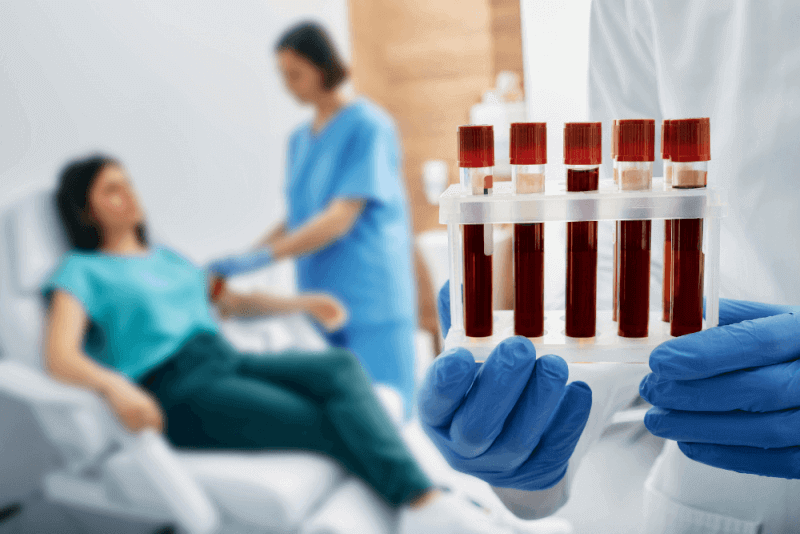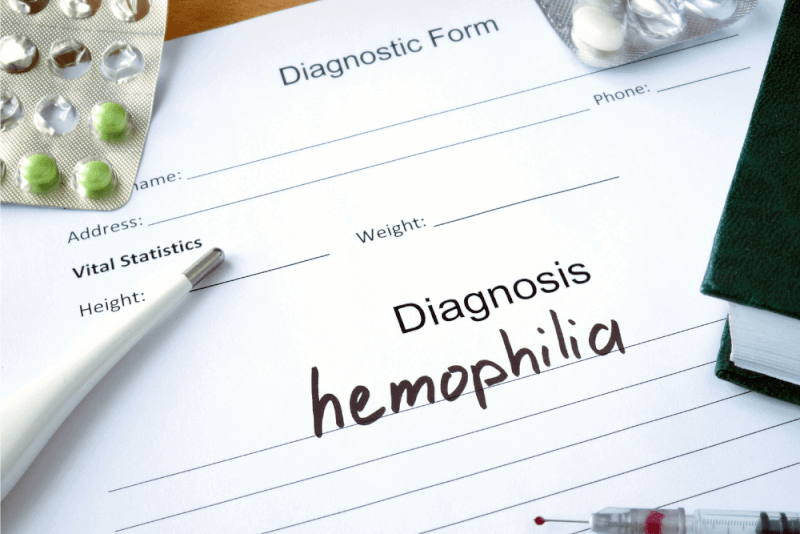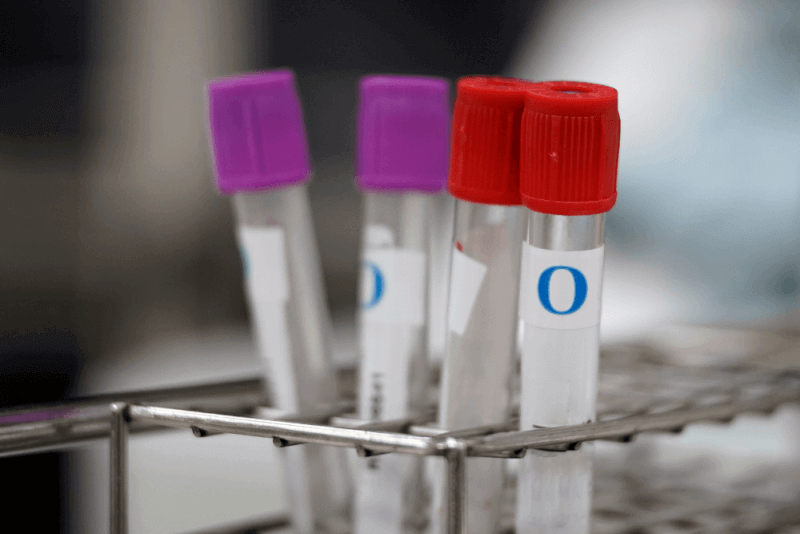What is multiple myeloma?
Multiple myeloma is when healthy plasma cells multiply abnormally and become cells that produce abnormal antibodies. This change in cells affects the ability of the kidneys, bones and body to produce healthy red and white blood cells and platelets.
In multiple myeloma, a rare type of blood cancer, cells turn into abnormal cells that produce abnormal antibodies called M proteins. In some patients, multiple myeloma does not show any symptoms. However, blood tests performed on these patients show signs of conditions that can develop into multiple myeloma. In this case, patients should be carefully monitored and wait until symptoms appear.
Diagnostic criteria for multiple myeloma
When multiple myeloma is suspected, specialists first perform a physical examination. In addition, the patient's symptoms and the medical history of the patient's family are questioned. They also perform tests to confirm the diagnosis and to determine the size and stage of the tumor, if any. These examinations include the following.
Complete blood count (CBC)
A complete blood count measures the level of red blood cell concentration, the amount of hemoglobin in the red blood cells and the number of red and white blood cells.
Blood chemistry test
The values to be checked in the blood chemistry test include the following.
- Creatine level showing that it works well up to the division
- The level of albumin, a type of protein
- Calcium level
- Lactic dehydrogenase level, also shown as LDH (LDH is also considered a tumor marker)
Quantitative immunoglobulin test
A test to measure the level of certain antibodies in the blood.
Electrophoresis
It is a test to look for M protein in the blood.
Urine tests
These are 24-hour urine tests to test for Bence Jones protein, which is one of the symptoms of multiple myoloma.
X-rays
X-rays are used to detect bone tissue damaged by multiple myeloma.
CT scan
It is another imaging method used to investigate possible bone damage.
MRI
MRI, which provides three-dimensional imaging of the bones and spine, is used by specialists to detect plasmacytomas.
PET scan
Another test to detect plasmacytomas, which are single groups of abnormal plasma cells.
Bone marrow biopsies
It is used to analyze abnormal and normal blood cells in the bone marrow. These biopsies also look for DNA changes that may cause the cancer to grow.
Symptoms of multiple myeloma
Multiple myeloma causes many different symptoms in patients. However, the most characteristic symptom is bone pain. Bone pain is also the first symptom that patients notice and the reason for consulting a doctor. Other symptoms seen in multiple myeloma patients include the following.
- Weakness in the extremities and legs
- Numbness in the arms and legs
- Spine collapse
- Spine pressing on the spinal cord
- Feeling too tired to manage daily activities
- Nausea
- Vomiting
- Loss of appetite
- Consume less water
- Unexplained weight loss
- Unexplained fever
- Bruising or bleeding more easily
- Confusion
- Brain fog
Causes of multiple myeloma
Although the exact cause of multiple myeloma is not known, the following are among the causes that increase the risk.
Genetic mutations
Mutations in genes that promote growth, called oncogenes, have been shown to cause multiple myeloma. In addition, it has been observed that a significant proportion of multiple myeloma patients do not have a specific chromosome fragment.
Environmental factors
Some studies show that exposure to radiation, fertilizers, pesticides and chemicals increases the risk of multiple myeloma.
Inflammatory diseases
Diseases such as heart disease, rheumatoid arthritis or type 2 diabetes increase the risk of multiple myeloma.
Obesity
Having high body fat is also among the factors that increase the risk of multiple myeloma.
Multiple myeloma treatment methods
Treatment of multiple myeloma patients is planned according to the symptoms caused by the disease and the extent of the disease. For this reason, patients at some stages are closely monitored for their general health status, and if symptoms develop, a treatment plan is determined to act quickly. Treatment of multiple myeloma is aimed at managing symptoms. Therefore, treatment options include the following.
Antibiotics
Multiple myeloma patients are more vulnerable to infections due to their weakened immune systems. Antibiotics are used to clear these infections.
Multiple myeloma smart drug
Smart medicine, also called targeted therapy, aims to treat the patient by using drugs that attack specific chemicals in cancer cells. These medicines block chemicals that cause cancer cells to die.
Bone marrow transplant
Bone marrow transplantation, also called stem cell transplantation, replaces diseased bone marrow with healthy bone marrow. Before the bone marrow procedure, blood-forming stem cells are collected from the blood. Patients are then given high doses of chemotherapy to destroy the bone marrow. In the next step, stem cells are implanted into the patient and the transferred stem cells travel to the bones and start to rebuild the bone marrow. This type of transplant using the patient's own cells is called autologous bone marrow transplantation. In some patients, stem cells are obtained from healthy donors. This type of transplant is called allogeneic bone marrow transplantation.
Since bone marrow transplantation is an option for multiple myeloma patients, treatment usually starts with a combination of various medications. Immunotherapy, targeted therapy, chemotherapy and corticosteroids may be involved in this phase. In this way, after patients have received treatment for a few months, the stem cells in their blood are collected. A bone marrow transplant can take place immediately after the stem cells are collected, or it can wait until the multiple myeloma recurs. After bone marrow transplantation, patients also receive immunotherapy or targeted therapy. This reduces the risk of multiple myeloma coming back.
Radiation therapy
Radiation therapy uses powerful energy beams to kill cancer cells. Among these rays, x-rays and protons are the most frequently used energies. Radiation therapy can shrink myeloma cells rapidly. Radiation therapy is also used when myeloma cells form a mass called plasmacytoma.
Treatment of complications
Multiple myeloma causes some complications. Treatment of these complications is extremely important to maintain the patient's general health. Complications and treatments that can be seen in multiple myeloma disease are as follows.
- People with kidney damage are treated with dialysis.
- Vaccinations are administered to prevent infections such as influenza and pneumonia.
- Bone-building drugs are prescribed to prevent bone loss due to the disease.
- In the treatment of anemia caused by the disease, medicines are prescribed to increase red blood cells in the blood.
Stages of multiple myeloma
There are two different systems for defining the stages of multiple fibroids. The most commonly used method is the RISS system. This staging system helps to plan the right treatment and increase the likelihood of treatment success. The criteria for staging multiple myeloma are as follows.
- Albumin levels provide information about the patient's general health status.
- Elevated beta-2 microglobulin (B2M) levels provide information about the stage.
- A high level of lactate dehydrogenase (LDH) is one of the indicators that the disease is in an advanced stage.
- Genetic changes in cancer cells are considered to be an indicator that the cancer is aggressive.
Multiple myeloma 1. Phase
In the first stage of multiple myeloma, albumin, B2M and LDH levels are normal or near normal. The genetic makeup of cancer cells is not considered a sure sign of aggressiveness.
Symptoms of multiple myeloma stage 1
Multiple myeloma patients at this stage usually have no symptoms. For this reason, patients are not aware of the condition until it reaches a more advanced stage. In addition, the most successful treatment is in the first stage.
Multiple myeloma 2. Phase
In the second stage of multiple myeloma, albumin levels are also low. However, the B2M level may be normal or slightly above normal.
Multiple myeloma 3. Phase
In the third stage of multiple myeloma, the last stage of the disease, B2M levels are extremely high. A high B2M level is also considered an indicator of the spread of the disease. LDH levels are also high at this stage. In addition, the presence of mutations in cancer cells in DNA analysis is considered an indicator of an aggressive course of the disease.
Types of multiple myeloma
Multiple myeloma is divided into three types. These varieties vary according to the severity and symptoms of the disease.
Suppressed multiple myeloma
Some people may have suppressed myeloma and not realize it for years because they have no symptoms. Suppressed myeloma can only be detected by blood and urine tests. Suppressed myeloma is also early-stage myeloma and is still pre-cancerous. The tests performed on people with suppressed multiple myeloma show the following results.
- In these patients, 10% to 59% of the bone marrow is composed of cancerous plasma cells.
- Abnormal antibodies produced by myeloma cells are found in blood or urine tests.
Suppressed multiple myeloma is a rare stage of diagnosis because it is asymptomatic. It is usually diagnosed during screening for a different disease.
Active multiple myeloma
Active myeloma is considered when there are signs of multiple myeloma and symptoms of damage to other organs. Among the features seen in patients with active multiple myeloma are the following.
- Presence of at least 10% cancerous plasma in the bone marrow
- Some protein imbalances in the blood
- High levels of calcium in the blood
- Kidney damage
- Anemia
- Bone damage
If active multiple myeloma progresses, the general health of patients deteriorates significantly. In addition to feeling more fatigued, these patients experience more severe bone pain. Patients also experience unusual fractures, shortness of breath, extreme thirst and abdominal pain.
Recurrent or refractory multiple myeloma
Refractory myeloma is when the disease does not respond to treatment or recurs after treatment. Because of this feature, it is divided into two.
Recurrent and refractory myeloma
This is the type in which the disease does not respond to treatment after a while, despite some response to treatment. It also falls under this type if it recurs within 60 days of treatment.
Primary refractory myeloma
It is a type of multiple myeloma that does not respond to any treatment. It is divided into two categories. The first type is myeloma that does not respond to treatment, yet does not progress. The second type is multiple myeloma, which both does not respond to treatment and exhibits progressive features.
Nutrition in multiple myeloma
When multiple myeloma is diagnosed, nutrition will be one of the most important tools for maintaining the general health of patients and supporting cancer treatment. A healthy and balanced diet during and after cancer treatment will help patients maintain their strength and support their recovery.
Maintaining a healthy weight
Multiple myeloma treatment makes it difficult for patients to maintain a healthy weight. Depending on the treatment methods used, patients may gain or lose excessive weight. Therefore, it is necessary to regulate nutrition and take care to maintain the ideal weight for the patient.
Consume small and frequent meals
In order for the body to withstand the treatment, patients need to consume food frequently throughout the day, but in small portions. In this way, side effects caused by the treatment, such as nausea, can be minimized. Patients are recommended to eat approximately every 3 hours. It is recommended that the number of meals during the day should be 5-6.
Preferring foods that do not tire the stomach
Medicines used to treat multiple myeloma often cause nausea and vomiting. To prevent this, patients are advised to avoid fried and spicy foods. They should also avoid foods with strong odors. Instead, soft foods such as yogurt, crackers, cheese, toast, fruit, rice and pasta are recommended.
Protein-rich diet
A protein-rich diet is essential for the maintenance of cells and tissues in the body. Protein also helps to heal and protect the immune system. The best sources of protein are those with the least fat. Among the protein sources recommended for patients to consume are the following.
- Chicken
- Turkey
- Fish
- Egg
- Milk
- Yogurt
- Cheese
- Hazelnut
- Hazelnut paste
- Beans
- Soya beans
Whole grains
Adding whole grains to the diet is extremely important for the patient to maintain energy levels throughout the day. The fact that whole grains are an important source of fiber also minimizes intestinal problems that may be seen in patients.
Fruit and vegetable consumption
Both fruits and vegetables contain antioxidants that help the body fight cancer. To increase the benefit, it is recommended to consume at least 5 servings of fruits and vegetables of different colors throughout the day.
Healthy fats
Olive oil, avocado and seed oils are among the healthy fats. It is extremely important to include healthy fats in the diet. In addition, frying and unhealthy cooking methods should not be used. Instead, methods such as baking or boiling are recommended.
Sweet and candy
Sweets and added sugar consumption should be limited. Because not only are these foods low in nutrients, but they often prevent the consumption of enough healthy foods.
Water consumption
Drinking enough fluids during multiple myeloma treatment reduces the risk of dehydration. In addition, consumption of beverages such as coffee, which can cause dehydration, should be limited.
Monitoring bowel habits
Chemotherapy in the treatment of multiple myeloma causes side effects such as constipation, gas and bloating. If any of these changes occur, the doctor should be informed. Dietary and medication changes are effective in managing these side effects.
Food cleaning
Multiple myeloma makes patients more susceptible to infections. Patients should therefore pay more attention to food safety. They are advised to wash their hands frequently when preparing their meals and to avoid raw foods. Another suggestion is to use different cutting boards and knives for each food group. Finally, meals should be cooked at the appropriate temperature and should be cooled and stored as soon as possible.
Vitamins and minerals
Patients should consult their doctor before using any vitamin or mineral supplements. Because some supplements can interact with medicines.
Alcohol consumption
Patients are advised to consume alcohol in moderation during the treatment process. Because alcohol causes dehydration. It can also cause the immune system to deteriorate.
Foods to avoid
Among the foods recommended to be excluded from the diet of multiple myeloma patients are the following.
- Raw meat or fish
- Unwashed fruits and vegetables
- Raw or semi-raw eggs
- Sushi
- Unpasteurized beverages
Blood values in multiple myeloma
The diagnosis of multiple myeloma focuses on 3 main indicators. These indicators are.
- Plasma cell level more than 10% in bone marrow biopsy sample
- Unusually large amounts of monoclonal protein
- It is accepted as evidence of end-organ damage as defined by CRAB criteria.
The revised criteria for the diagnosis of multiple myeloma are as follows. If both of these criteria are met, multiple myeloma is diagnosed.
- Malignant plasma cells ≥10% in bone marrow confirmed by biopsy or presence of bone or extramedullary plasmacytoma
- C alcium elevation-serum calcium > 0.25 mmol/L (> 1 mg/dL) higher than the upper limit of normal or > 2.75 mmol/L (> 11 mg/dL)
- B a lesion - X-ray, CT or PET-One or more osteolytic lesions on CT scans
- Impaired renal function - creatinine clearance <40 mL/dakika veya serum kreatinin> 177 μmol/L (> 2 mg/dL)
- 60% or more clonal plasma cells in the bone marrow with or without CRAB
- Associated free light chain levels greater than 100 mg/L
- One or more lesions of at least 5 mm in size on MRI examinations
Life expectancy of multiple myeloma patients
Some patients can live with multiple myeloma for more than 10 years. Especially patients who are diagnosed at an early stage and start treatment have a longer survival time. Five-year survival rates of multiple myeloma patients vary between 40% and 82%. The reason for such a wide range is factors such as age and general health status.
What should multiple myeloma patients pay attention to?
Multiple myeloma is a disease that affects patients in different ways. In addition, in the precancerous stage of multiple myeloma, patients are closely monitored without any treatment. In cases of remission, different treatment options can be used.
Among the points that multiple myeloma patients should pay attention to in order to support their overall health are the following.
- Care should be taken to consume healthy foods.
- Since patients have appetite problems, it is important to meet calorie needs with small meals.
- Smoking should be stopped.
- Patients need to make sure they get enough rest.
- An exercise program suitable for the patient should be followed regularly.
- The emotional health of patients is also extremely important. For this reason, it is recommended that patients consult a specialist if they feel depressed.
- It is recommended to be in constant communication with their doctor about any concerns during the recovery process.
Risk factors for multiple myeloma
Factors that increase the risk of multiple myeloma include the following.
- Multiple myeloma is a rare disease in people under the age of 35. It is also more common in people over the age of 65.
- Multiple myeloma is more common in people of African descent and less common in people of Asian descent.
- Men have a higher risk of multiple myeloma.
- Family history of multiple myeloma
- History of MGUS.







